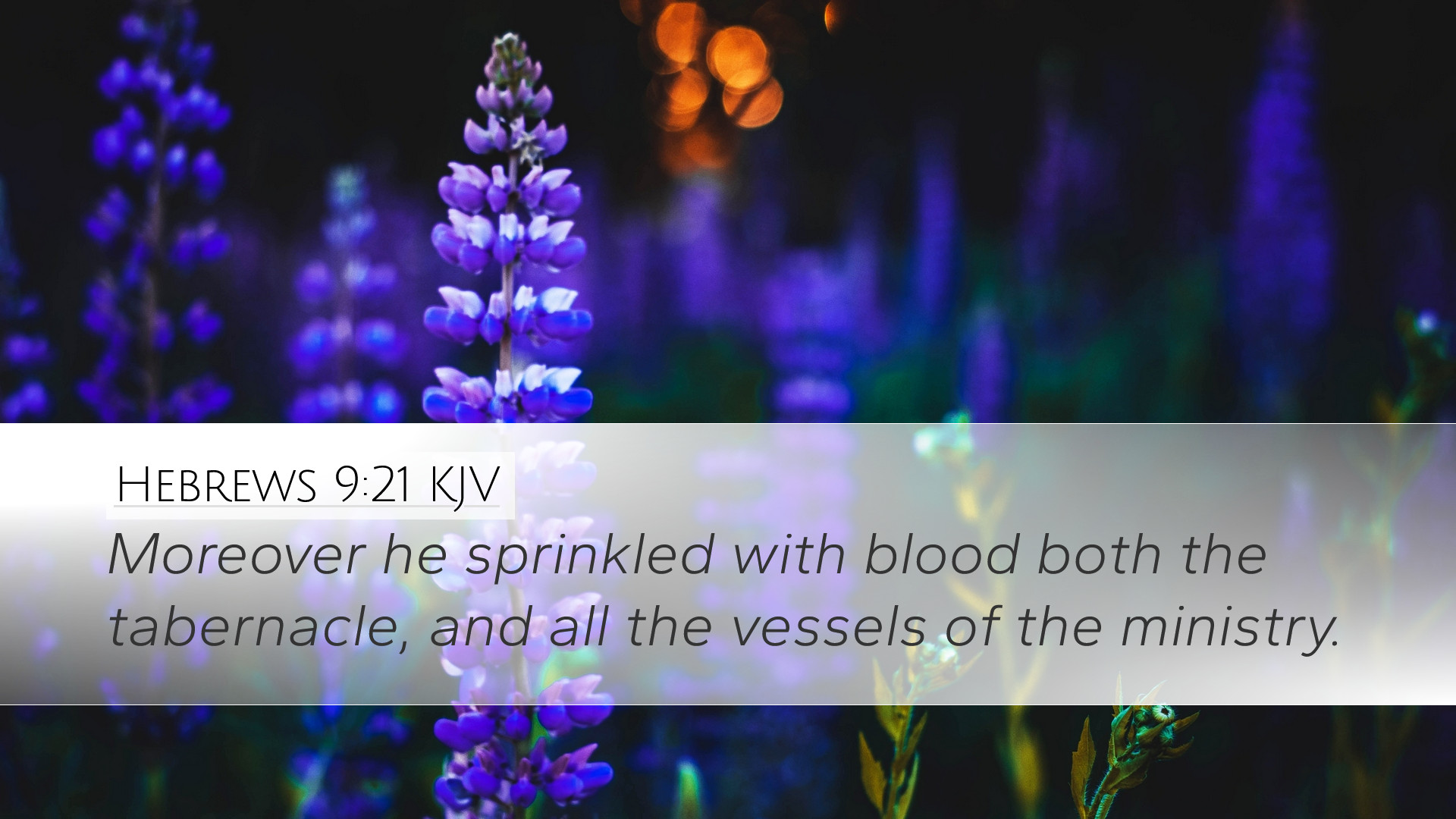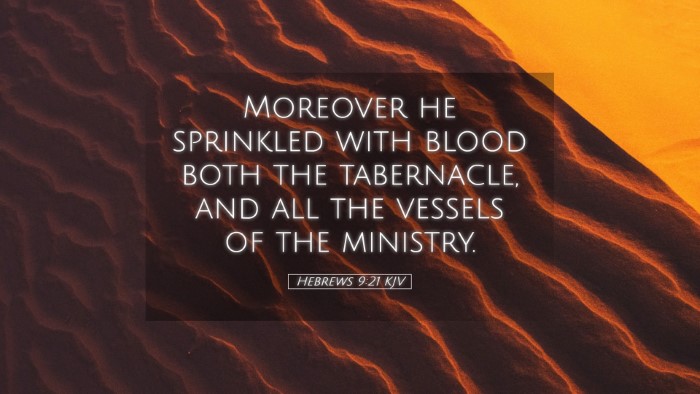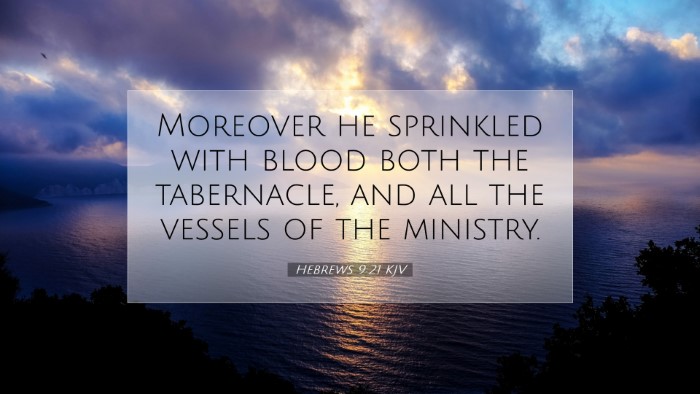Commentary on Hebrews 9:21
Verse: "Moreover, he sprinkled with blood both the tabernacle and all the vessels of the ministry." (Hebrews 9:21)
Introduction
The Epistle to the Hebrews is rich in theological insight and presents the culmination of God's work through Jesus Christ. Hebrews 9:21 specifically links the Old Covenant practices of sacrifice and purification with the New Covenant established through Christ. This commentary draws from several public domain sources, including the works of Matthew Henry, Albert Barnes, and Adam Clarke, to provide a comprehensive examination of this verse.
Contextual Background
The context of Hebrews 9 revolves around the comparison between the earthly sanctuary and Christ's heavenly ministry. The author of Hebrews emphasizes the inadequacy of the Old Testament sacrifices in comparison to Christ's ultimate sacrifice. In verses preceding 9:21, the discussion about the tabernacle's rituals and the role of blood in atonement lays the groundwork for understanding the significance of this verse.
Exegesis
In Hebrews 9:21, the act of sprinkling with blood serves as a critical symbol throughout Scripture. It signifies purification and the transfer of responsibility for sin. The author emphasizes that this act was not mere ritual but carried deep theological implications.
Matthew Henry's Insights
Matthew Henry highlights that the application of blood in this verse signifies the establishment of the covenant and the seriousness of sin's atonement. He emphasizes that the sprinkling with blood “both the tabernacle and all the vessels of the ministry” indicates that all aspects of worship required cleansing. In a detailed manner, he notes:
- Significance of the Tabernacle: The tabernacle was not merely a physical structure but a representation of God's presence among His people. The blood's application signifies the sanctification of God’s dwelling place.
- Cleansing of Ministry Vessels: Henry states that all vessels used in service to God were purified, illustrating that every aspect of worship must be free from corruption.
Albert Barnes' Commentary
Albert Barnes sheds light on the theological implications of blood sprinkled in the tabernacle. He notes that the process of sprinkling was part of the larger sacrificial system, rooted in the sacrificial laws laid out in the Torah. According to Barnes:
- Fulfillment of the Law: The blood symbolizes fulfillment; the new covenant’s inauguration happened through Christ's sacrificial death, which is referenced here as the ultimate act of atonement.
- Relevance to the Reader: Barnes argues that understanding this practice would have been significant to the Hebrew audience, as they were familiar with these rituals and needed to grasp their implications in light of Christ’s sacrifice.
Adam Clarke's Observations
Adam Clarke provides additional perspectives on the act of sprinkling, emphasizing its historical backdrop found in the Old Testament. He elaborates that:
- Historical Context: Clarke refers to Exodus 24:8 where Moses sprinkles blood as a seal of the covenant. This parallel draws a connection between the old and new covenants.
- Spiritual Cleansing: He posits that the act represents not just ritual cleaning but a spiritual application necessary for believers who wish to enter into a relationship with God.
Theological Implications
The integration of these commentaries reveals the multifaceted nature of Hebrews 9:21. It speaks to the seriousness of atonement, the purification necessary for worship, and the transition from the Old to New Covenant. The use of blood, a common theme throughout Scripture, emphasizes life and death in the context of sin and redemption.
The Blood as a Symbol
Blood, in biblical theology, represents life and the severe consequences of sin. Through the lens of the New Testament, the blood of Jesus becomes the ultimate means of reconciliation between God and humanity. As Clarke insightfully notes, this blood does not merely purify physical elements; it sanctifies believers, allowing them access to the Holy of Holies.
Practical Applications for Faith Communities
Understanding Hebrews 9:21 can transform how faith communities approach worship and the concept of holiness:
- Acknowledge the Holiness of God: Just as the tabernacle and its vessels were sanctified, believers are called to be set apart for God’s service.
- Embrace the New Covenant: Congregations must recognize the significance of Christ's sacrifice as the fulfillment of the law and the basis for their relationship with God.
- Engagement in Worship Practices: Worship leaders and pastors can teach the importance of understanding the origins of Christian practices and the profound implications they carry as expressions of faith.
Conclusion
Hebrews 9:21 serves as a pivotal reminder of the sanctity required in approaching God. The sprinkling of blood upon the tabernacle and its vessels illustrates an essential theme woven through the tapestry of Scripture: the profound need for purification and the gracious provision of Christ’s sacrifice. By examining this verse through the lens of respected public domain commentaries, one gains deeper insight into the transformative power of the covenant established by Christ, reinforcing a theology central to Christianity.


